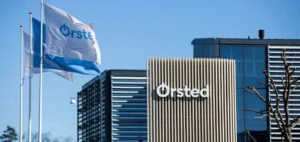Hollandse Kust VI, in the Netherlands, will host the construction of an offshore wind farm by Shell and Eneco.
A 3% decarbonation of the electricity demand
Hollandse Kust VI will host an offshore wind farm of Shell and Eneco following a tender. The project will have an installed capacity of approximately 760MW. In addition, it will be located approximately 53 kilometers off the Dutch coast and the town of IJmuiden.
Hollandse Kust VI will be delivered through a joint venture called Ecowende. In addition, the offshore wind farm is expected to become operational in 2026. In addition, Shell and Eneco are already making the final investment decision for the wind farm.
Wael Sawan, director of integrated gas, renewables and energy solutions at Shell, says:
“With Ecowende, we will take a major step forward in growing our offshore wind portfolio while making a positive contribution to biodiversity. With this project, we can cost-effectively accelerate the large-scale deployment of offshore wind in the Netherlands and beyond. This fits well with Shell’s Powering Progress strategy to deliver more clean energy to our customers at home, on the road and at work.”
Ecowende aims to set a new ecological benchmark for the development of wind farms in the North Sea. Thus, the goal is to allow offshore wind farms to have a net positive impact on nature in the future.
A wind farm with a focus on ecology
Kees-Jan Rameau, Director of Strategic Growth at Eneco, states:
“Together with Shell, we were at the forefront of offshore wind development in the Netherlands. We gained a lot of knowledge, also in the field of ecology, and brought back This has contributed to the further development of offshore wind in recent years. It is great that we are now entering a new phase with Ecowende, with nature as our starting point. This is very much in line with our ambition to live and act within the natural boundaries of the planet.”
In addition, the design of the wind farm takes into account the natural environment in Hollandse Kust VI. Indeed, the design takes into consideration the creation of a corridor allowing the passage of birds.
In addition, the wind farm in Hollandse Kust VI is expected to use innovative foundation techniques. Thus, the objective is to minimize the impact on marine mammals and marine life. Finally, natural reef structures on the seabed will stimulate biodiversity.
Globally, Shell has a portfolio of over 46GW of renewable energy generation potential. Thus 2.2GW are in operation and 3GW are under construction. In addition, the company has 40.9GW of potential capacity in solar, wind and integrated wind-hydrogen projects.






















